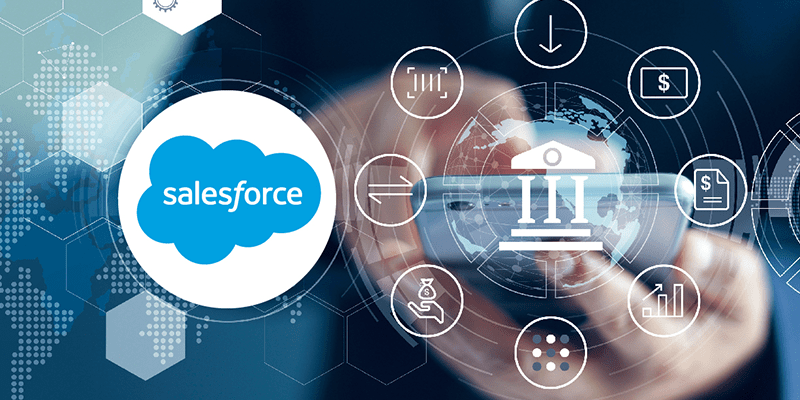We live in a fast-paced world where change is the only constant. Businesses often find themselves up against limited time, resources, and budgets. They want their products to be consistently relevant to their audience despite having an outdated underlying code base (and possibly business logic) that prevents them from responding quickly to new data and innovations. We believe that providing insight from the initial design phase onwards allows companies to make decisions that are specific to their audience and business needs. If a company is looking to stay relevant in the future, most of the spending in IT, For Instance, should be upgrading and modernizing their products. A Gartner survey shows that as of 2022, the spending in IT will exceed USD 4 trillion. If some of this money is spent in the modernization of products and services, these products will not struggle in the future market. Because with this comes a product that feels fresh and responsive, rather than being forced by the limitations of its older components.
How to modernize legacy products
1. Define your goals.
Before you begin, it is essential to define the problem to ensure you have a clear goal. It is the most crucial step in this process because if you do not know your end goal, how can you even start looking for solutions? The best way to do this is by being honest with yourself about what matters most to YOU as a person or business owner. Maybe it is losing weight, gaining muscles; or getting more out of work hours each week; whatever it might be—think about how much energy and time are required for those activities right now (or currently). Then ask yourself: "What would happen if I could achieve these outcomes without having any limitations?"
2. Understanding the customer journey
We cannot emphasize enough the importance of customers in any business.You cannot truly modernize a legacy product until you understand the customer journey, and this means understanding the various ways people use your product. This is especially true when it comes to complex systems like marketing automation (M&A) platforms. A report by Pointilist showed that 93% of high performing organizations highly value a journey based approach in managing their customer experience.
Let's take a look at two approaches for evaluating how customers interact with M&As:
-
Screening and analysis
Looking at screen captures from dashboards or reports and identifying key metrics that indicate user behavior to better understand what they're doing with their data? This type of investigation is great because it gives you insight into how users are using your tool—but it also requires a lot of manual labor; if you want something more automated, try our earlier method instead!
-
User interviews
Conducting interviews with customers who have been using our platform for some time will give us valuable context about why they're using these tools in certain ways and whether there are any common patterns between them; this kind of research can help inform decisions about future development efforts (such as feature set changes).
-
Customer Experience Analysis
The next step is to understand the customer journey. This means understanding the user experience and product usage, as well as their interactions with your brand. Start by looking at your sales funnel data. What are people doing when they interact with you? Do they have an issue or question that needs answering? Are there any problems with their current solution?
Once we know what’s going on in these areas, we can start thinking about how we could improve our products or services for those users who are on those journeys—and how we should optimize our next steps based on this insight (which will help us prioritize them).
3. Dynamically monitoring product usage
Monitoring usage is a crucial part of modernizing legacy products. Once you know how your customers are using your product, you can begin to understand their needs and wants, as well as any problems or features that may need addressing in future releases.
Monitoring usage involves gathering data from various sources (such as user sessions and logs), analyzing it against predefined criteria (e.g., determining which features are most frequently used), and reporting back on the results so that they can be used to improve future iterations of the product.
Building a digital ecosystem as a method of monitoring product usage
As a leader, you can't simply go off and start building some products or solutions for your employees. Before you even think about developing anything new, you must define exactly what the problem is that your company is trying to solve. This will help guide your thinking as well as help keep expectations realistic since no one wants their company's mission statement to be "to make things better."
Once this important step has been taken care of (and ideally before any other steps), we recommend setting goals for yourself and those around you. These should be clear-cut objectives that are measurable but also ambitious enough so they're challenging yet achievable within 3-6 months (or however long it takes). For example:
What improvements would I like in my fitness regimen? How many calories could I burn per week by doing yoga instead of going outside? How much weight do I need to lose over the next 6 months?
4. Understanding users, optimizing the experience, and providing the right information are key to modernization.
As a product manager, you’ll need to have a thorough understanding of your customers and their journeys. You should be able to identify where they are in the life cycle and how they use your product or service. This knowledge will help you design experiences that meet their needs as they move through the process.
In addition, your organization needs to understand what drives customer loyalty—and why some users engage with products more than others. For example: if someone uses a legacy version of your software but doesn't want any updates made available through an online store (or doesn't even know about them), then there's no incentive for them not only to download the new version but also pay for it if needed by clicking through another link at checkout time?
Conclusion
We’ve only touched on the basics of modernizing legacy products. In our experience, it’s best to start with small steps and keep iterating as you go along. Innovators like Apple and Tesla Motors have taken a customer-insights-driven approach to drive their products. One way or another, your company is a Legacy Company – it has served its customers for years based on its previous set of designs Aids. Your decision to drive a Modernizing Legacy Product is a bold one. It envisages staying relevant to your customers and emerging as the market leader in your domain. You are right in stating that your customers are not screaming for it! But they wouldn’t if they don’t know what you have planned for them. What they do not know therefore can still be sold to them very well. A good way to put across the Modernizing Legacy Product, which is selling something which customers don’t know exists, is to start with the end in mind and then backtrack with all the Customer Insights that made that end state possible!

.webp)

